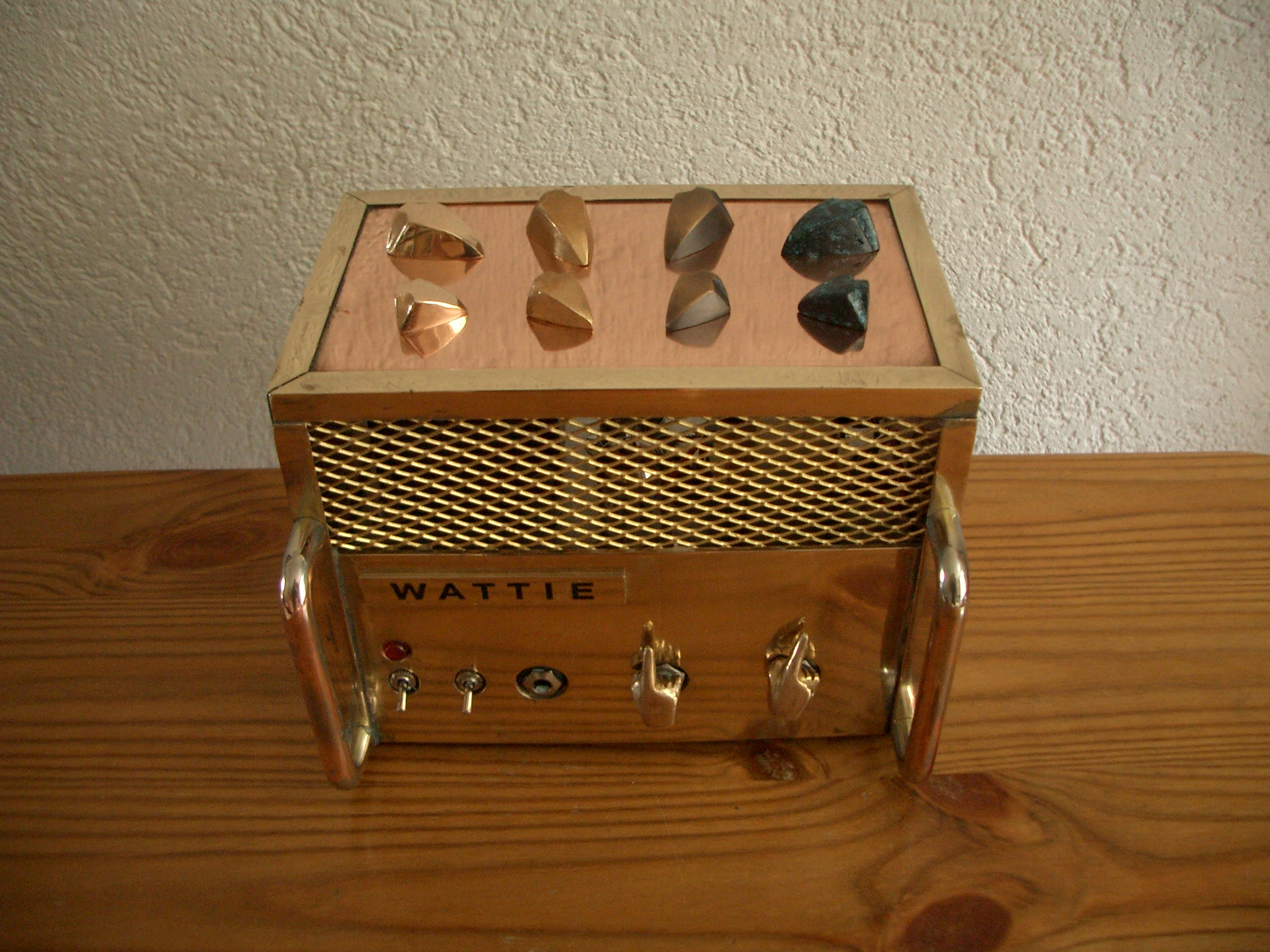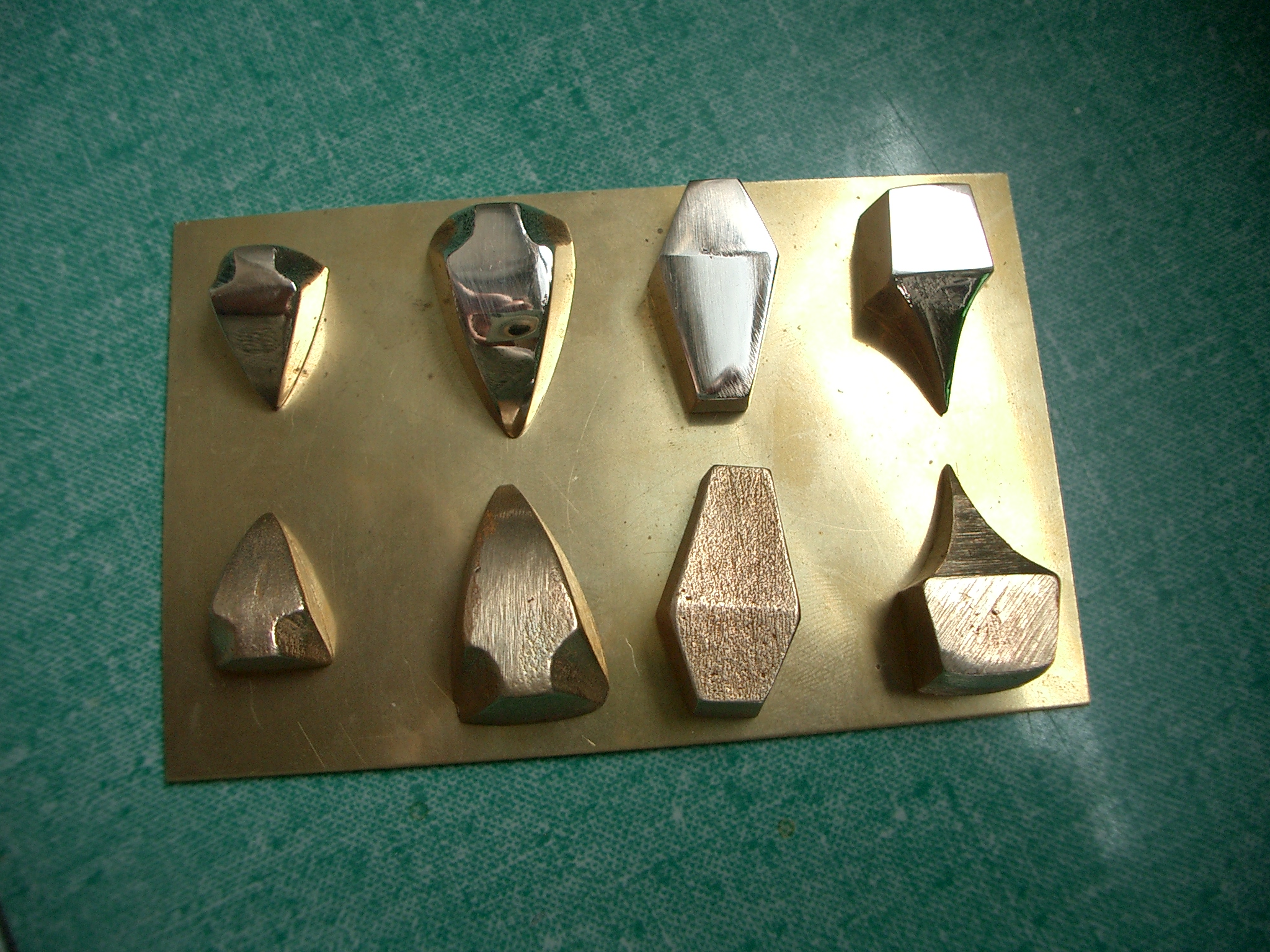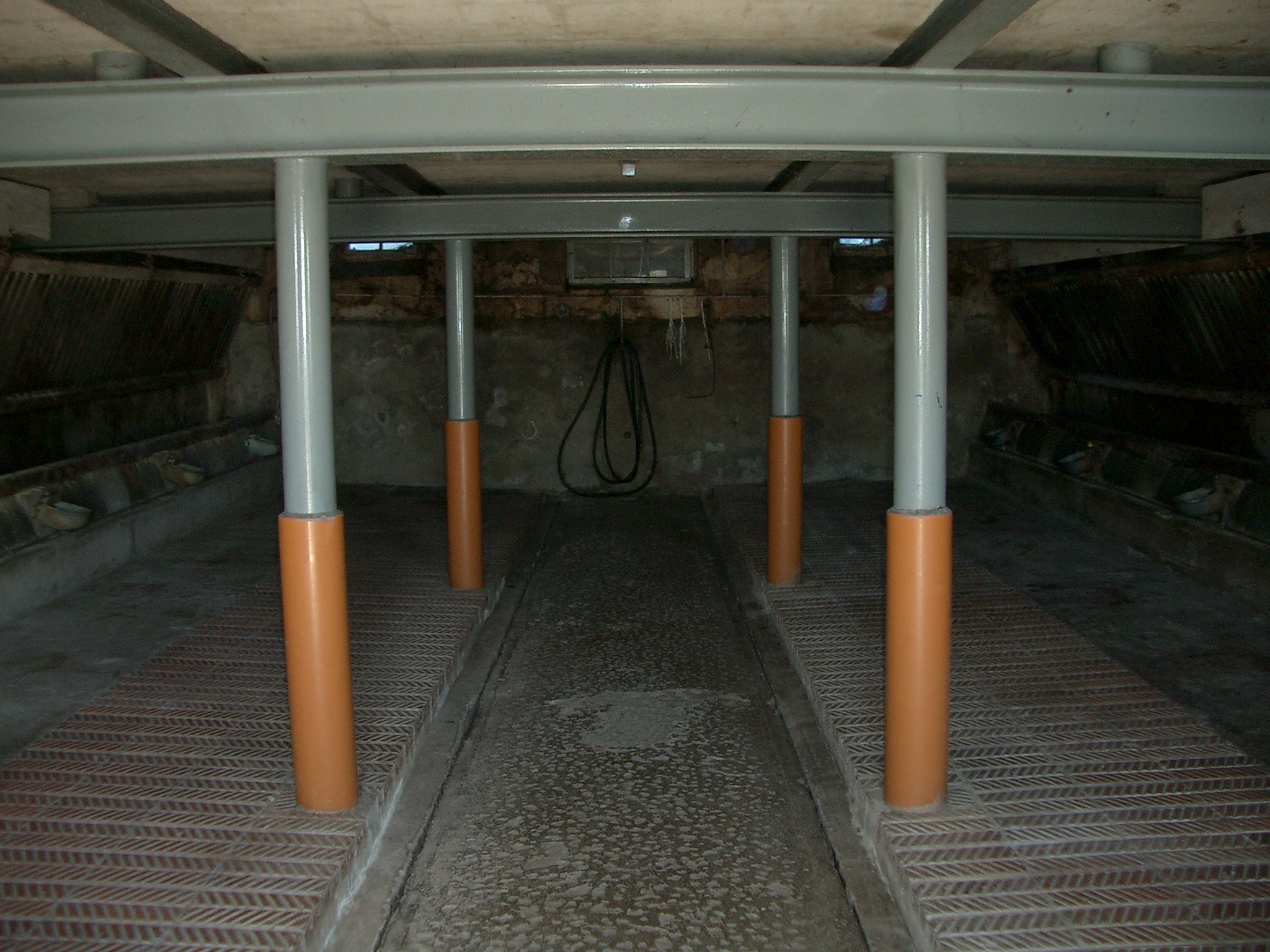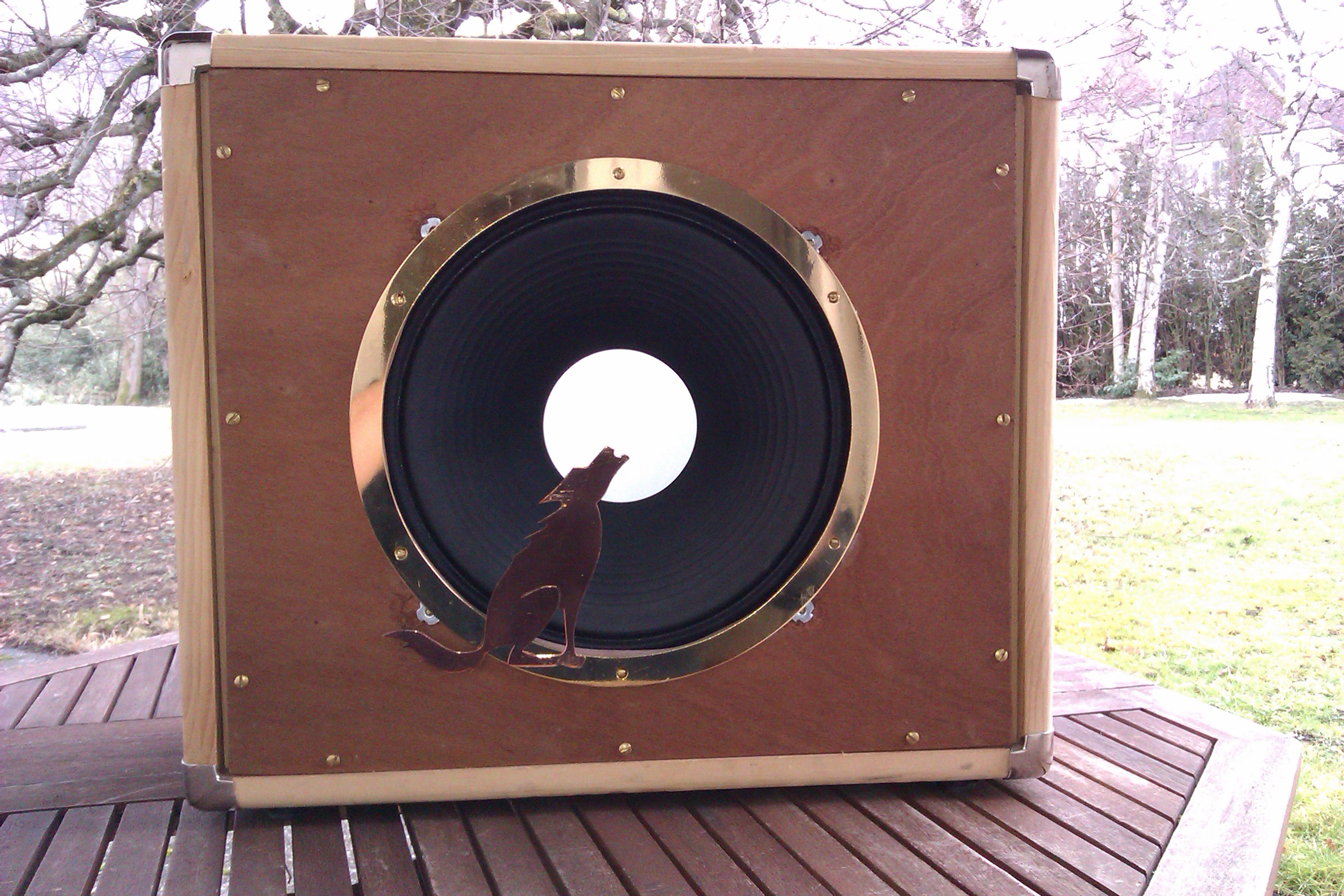I found myself in Switzerland with some spare time and was looking for something creative to pass the uncertain period until I could find another job. It struck me that I used to very much like the sound of my guitar patched in to an old valve record player, and if I could recreate that sound as cheaply as I did when I was a poor teenager, I would be happy. Having very little spare money I decided to find a record player second-hand and repeat the experience, perhaps even re-housing the amplifier part without losing any of the wiring.
I searched high and low for the junk needed to build the amp, but came up with nothing. What is it around here? In the UK I can find thousands of these things laying in junk shops. Meanwhile, researching the internet I found a fantastic resource in AX84.com, which taught me I could, with help, build a valve amplifier as a hobby project.
With the help of my good friend Pascal, who had some electrical engineering qualifications, I sourced the components for an amplifier. Actually for two amplifiers, since I was sure I would screw up my first attempt. I learned later that there are many ways to repair screw-ups as long as no magic smoke disappears from the components.
The story of the amplifier build can be found on AX84, and I am happy to give the site a plug here. I was left with a problems about how to house the chassis, and I wanted to do something decorative and unique. At that time I had never heard of steam punk, but the idea of a copper and brass box appealed to me. Even more I wanted to put some knobs on the controls which had never been tried before.
Pascal's father owned a small manufacturing facility, which among other things created bronze lettering for funereal monuments. I was excited to find that bronze outlasts many metals, and that anything made with this alloy would last thousands of years. Pascal showed me the process and the factory, and being an IT guy it was overwhelming for me to see something being constructed in the real world rather than devised from logic and delivered by computers.
I couldn't avoid thinking that it should be possible to translate the same gates and processes I had used in creating software to putting something real together. So I tried it.
I came up with several designs carved from rubber and wood. The design I really wanted was apparently too complex to model and mould. The finger design was also complex, but manageable. A few other play shapes were tried, but the one I loved the most was the pointing finger.
Strange how the eventual finger was the subject of projection by others as to what it meant for them, however there is nothing subliminal in the design, it' started as just a pointer to easily show where a potentiometer is on a scale from zero to full. The power of the eventual finger to evoke imagination is, I realise now, part of its attraction. Having made it, I now notice that a pointing finger is an ancient and ubiquitous symbol. None of that really influenced what I did.

Test
knobs
Once I had the rubber prototypes I carved some wooden masters. We took the masters to the foundry where they were pushed into some tightly packed sand with some other work for the day, and I saw the moulds sealed and molten bronze poured in. Out of the whole process I think this was the most exciting. It was the transformation from concept to reality. When the moulds were broken, there were my knobs. I was intrigued to find that when the metal cools it shrinks to smaller dimensions than the master, and that this introduces subtle changes depending on the cooling rate for each part. Some edges seemed more pronounced and flat surfaces concave. The result was quite acceptable for me, leaving enough metal to work, even though it would take more effort and result in smaller pieces.

CopperWATTIE
with knobs on
The pieces went into a tumbler along with the gravestone letters to polish the surfaces somewhat. Pascal's father invented a method to hold these weird shapes steady so that holes could be drilled at the right angles for shafts and grub screws. I played with the final finish and Pascal showed me how to artificially age the metal. On my next birthday Pascal presented me with a set of chromed knobs, some of which I have since placed on my guitars.
So now I had a couple of knobs for the CopperWATTIE, and a few extra blanks to play with. It was only really necessary to develop the look of the finger from the “back hand” view, as the other side would always be against the face of the amplifier.

Some
knobs
Still with no paid employment, I bought some watchmaker's files and a Dremel, and started to play with forming the palm-side finger on one of the blanks. Over a few days I found I could crudely represent the fingers and most awkwardly, a thumb curled into the side to the piece that was previously a flat surface. There was pain and blood. When the piece was polished, it rapidly heated and burned me. I stabbed myself several times with the files and sharp tools. I believe that when you put so much into work, you form a special bond with the result. My bond with the fickle finger is so great that is should be sewn into my skin. When it shot away from the polisher I thought it was going to bullet me good.I wanted to make more with two fingers expressing a V sign which is the English equivalent of the American middle finger, I wanted to make one with the middle finger pointing upwards, one with devil horns, one with a thumb pointing upwards. I was going to sell them as Monopoly pieces, hell yeah even a chess set. The trouble is they were very time-consuming to make.
And painful.
So there was only one.

The
Fickle Finger
I will admit I was very proud of my work.
I promptly lost it.
My workshop was an old cowshed next to a graveyard. It was a creepy place, and not somewhere to go after dark. I would cycle there by day, work on amplifiers and cycle back to an apartment block which precluded any noise except breathing. You can imagine working on guitar amplifiers had to be done near people who would not complain, if near people at all. Next to a graveyard was perfect, except the cowshed had no heating, poor lighting, and it was creepy. I hardly went there during the winter months, and had no idea where the finger was – at home, at the shed or on the road between the two, so I gave up looking.

Cowshed
The decision technique
The finger I had made would balance in seven different ways. As a hand with a pointing finger there were many ways it could be used to express a concept in the same way people use their hands when they talk to embellish conversation. Pointing upwards can mean “wait”, or even indicate a higher power, pressing a forefinger on a table might mean “here” or “immediately”. You can point with your knuckles and thumb down or twist through 90 degrees to convey direction. Knuckles up and forefinger poised to indicate “come here”. With some imagination all of these expressions could be read into how the finger was placed, and in which direction it was pointing. It was possible to roll the finger like dice, to drop it or to place it and have fun interpreting its message. Better still, the probability of it landing in each of its seven positions, not being equal, was more fun to try to predict. The finger was “fickle”. Ask it a question and roll the finger, we will have fun pretending to interpret the answer.
I heard about a way of decision making when you have a choice of two options: write an option on each of two pieces of paper. Put the pieces of paper in a hat. Shake the hat. Dip in and choose a piece of paper, pull it out and read it. If you are disappointed in the choice your method drew, you should have chosen the other option without pissing about with a hat. This doesn't easily translate to more than two choices.
Not too long ago I worked for a company which was privately owned. My boss would neither make choices, nor allow any information to come forward which would allow others to make choices. If he became at all suspicious that someone anywhere near a decision, he would reverse it. Repeatedly. Ad infinitum. It became necessary to come up with some creative ways to divine his will, and then to pretend things came about through chance. One way to reduce this risk was to ask him if he would bet the company owner's money on an outcome. If yes, there was hope. The real test was whether he would bet his own money. No matter how much or how little of my own money I would lay on the table, he would never match it with anything from his pocket. No odds would extract anything but a snort of derision There are only two possibilities I can imagine: either his wife did not allow him any pocket money or he already knew he would not stick with a decision.
If pushing him to bet failed, I would draw a circle of equal segments with decisions marked against each, and threaten to spin a pointer in the middle, a bit like the game of spin the bottle. The finger would be ideal for this. I wonder what he would have done if I brought a ouija board to work? Even the threat of spinning the pointer would make him twitch, but this was where the plan started to work in my favour: He would redraw the segments to represent his desired outcome, sometimes with 350 degrees of the circle showing only one choice. This was where I had to act quickly to change the subject before he realised he had made a decision. With some effort I could execute to an irreversible point without interference. With such cowardice in the organisation, I learned that the point of irreversibility is quite a long way beyond reason.
I had been uncommonly calm about losing the fickle finger. Usually I punish myself quite severely for losing something, but I knew already that it might be found in a thousand years by a confused future being who wondered what the hell is was. It might already be having an adventure with someone else. In the short time I had been carrying it in my pocket there were several situations where it became the “point” of conversation, including use as a speaking totem when everybody would try an talk over others. Whomever the finger was pointing to had the right to be heard and it would be fought over when things got heated.

CopperWATTIE
Then, one late spring day, when I went to the shed, I saw the finger sitting in the sun, by the graveyard, pointing at the graves.
I had been on, beside and across this position dozens of times in the last few months. I had scoured the ground and swept the area, and there was not one hint that the finger was there. This is not the first time something like this has happened. Once, when I was married, I lost my wedding ring when clearing snow from the front of my garage. Two years later I found the ring in a box of plumbing spares, in with the brass olives used for compression joints. How it got there I can only guess: I was probably clearing up and placed the ring in the box without looking too closely. I don't remember doing it, but it is an explanation which doesn't freak me out. The fickle finger vacation and return doesn't have such an easy explanation.
So now the finger had Juju. It had spent months in or near a graveyard, in one of the creepiest places I have known, it had caused me pain, I had bled on it. The lessons hadn't finished yet.

Did
I tell you I liked making things?
When I was young, my brothers and I watched a film called The Point, where everyone except one poor guy called Oblio had a pointed head. Oblio was outcast and different, until he could be persuaded that he had a point. I had found a job which required me to challenge and improve processes; to raise capabilities within the organisation. I rediscovered that some people can defend their position so strongly that they will attack, sometimes quite childishly. It is unfortunate when what should be a challenge to process or execution sinks to a political or even personal level. I started to question whether I could continue within that sort of environment. Notionally and physically, I knew I still had a point. I used the finger as a lucky charm and a totem.
Sometime during all of this I took some more blanks and made more points for Pascal, my two brothers, my daughter and my son, and another friend. They all have different balance, different detail and will have different adventures. I was so concerned that I would lose my point again that I took a mould of the finger so that is could be recreated if necessary. I hope if they ever read this they know that they also have a point, at least in my life. One of seven, never to be recreated again. Now my son has some ambitions and skills in making jewellery, I sincerely hope he can reproduce the finger in a precious metal, although I would still consider this a facsimile.
I lost it again. It wasn't in the car or any of the places I traced ten times since I last knew I had it. After it had taught me a few lessons it had gone on another adventure, from my pocket to I don't know where. I was even less worried this time. I had a mould in which wax could be poured and a replica could be accurately re-cast.
It came back.
Some weeks later, when the sun dropped in front of my garage, my eye caught the last sparkle on the darkening surface of the bronze. It was there is a place that had been swept many times, driven over dozens of times and walked on by hundreds of feet. It was pointing upwards, looking for attention. I picked it up, rubbed it through my fingers to make sure the familiar shape had no damage, polished it as best I could with a handkerchief and took it indoors.
I can't trust it in my pocket, or I should more accurately say I can't trust any of my pockets to hold on to it, so I placed it in my bedside drawer for safety.
I have found myself more and more sitting in the house alone with nothing but the ticking of clocks to keep me company, and the odd noise coming from another room. A couple of nights ago I heard something shift upstairs. I think I will go and check now if the finger is where I left it.